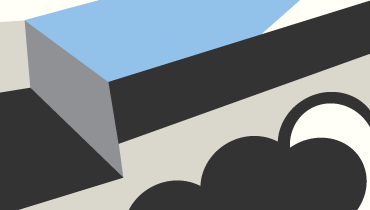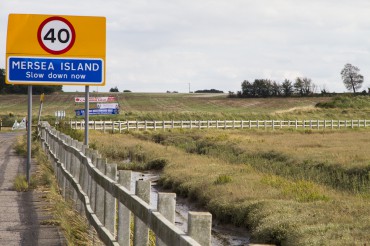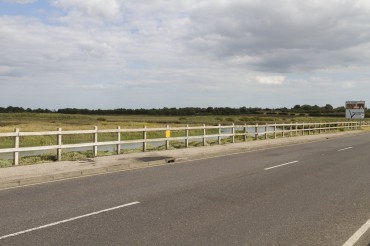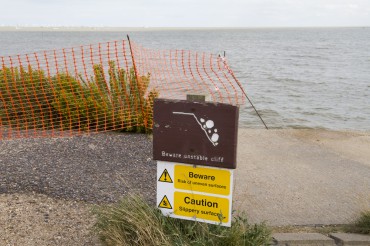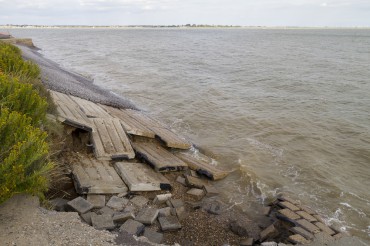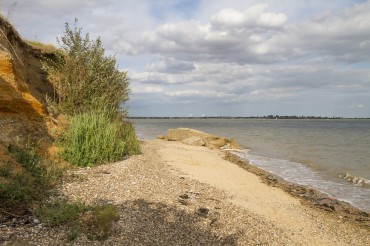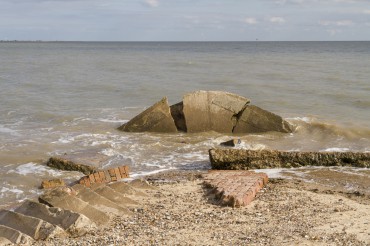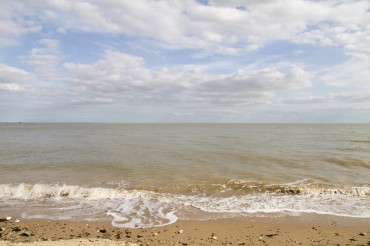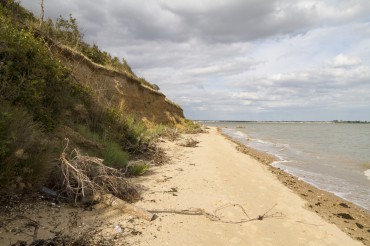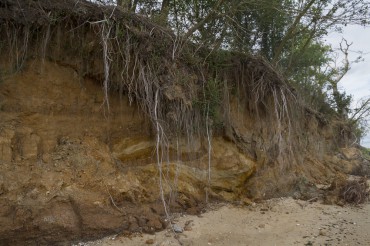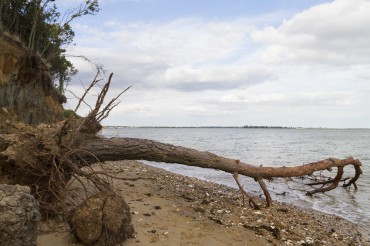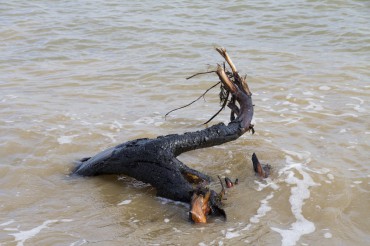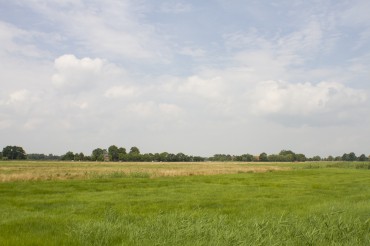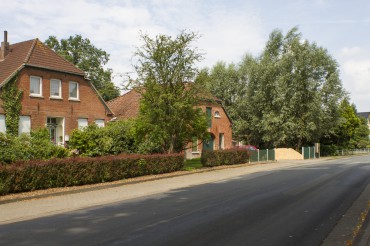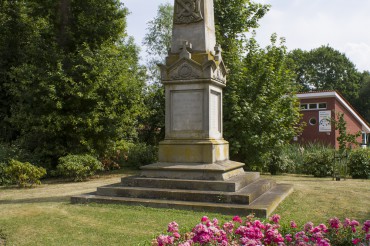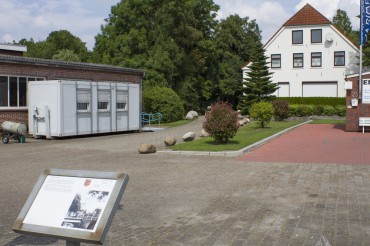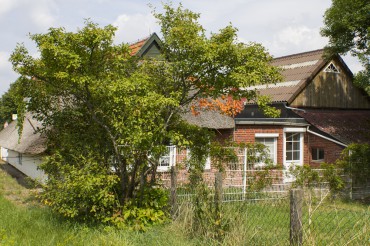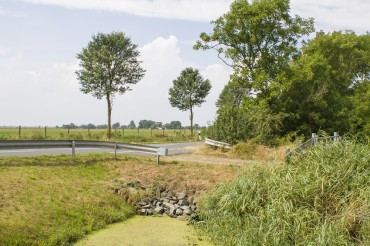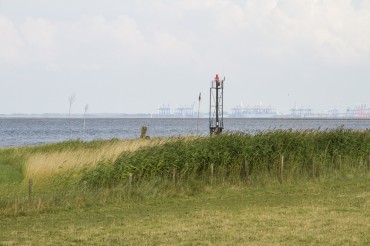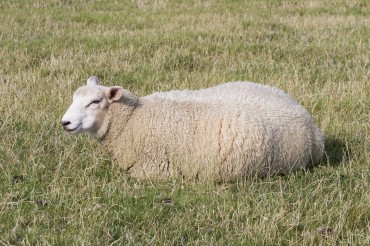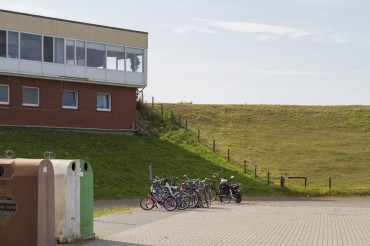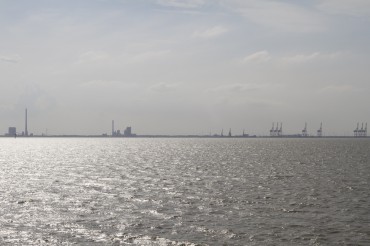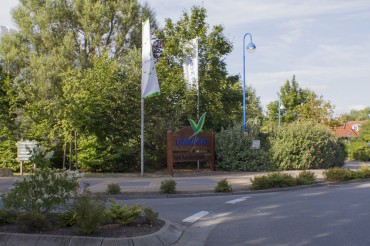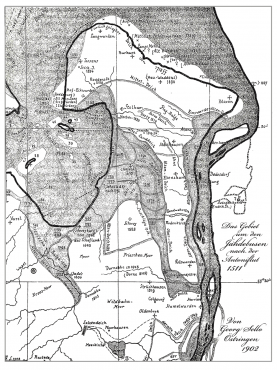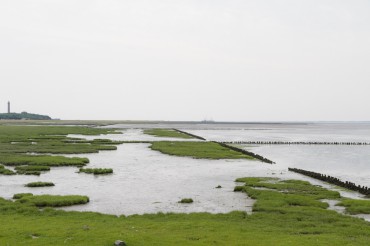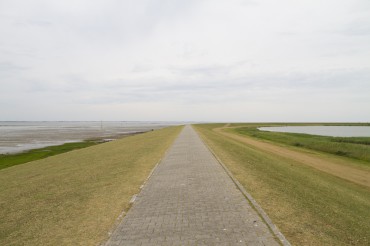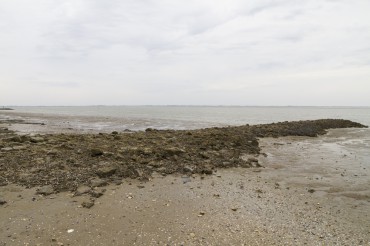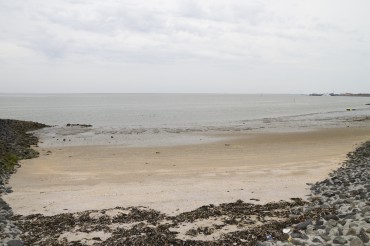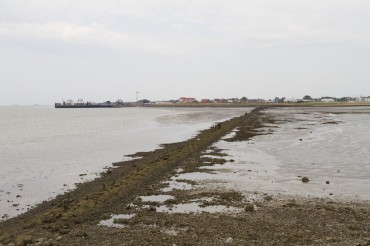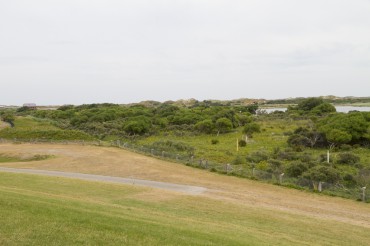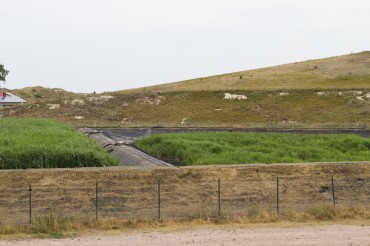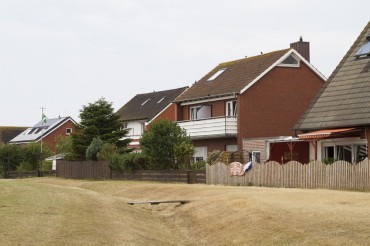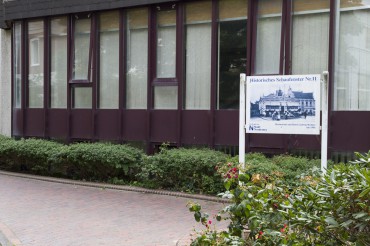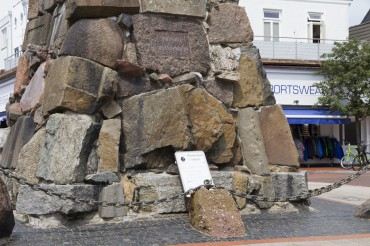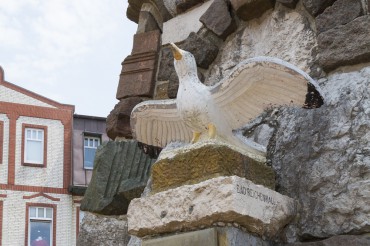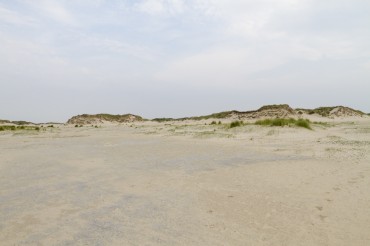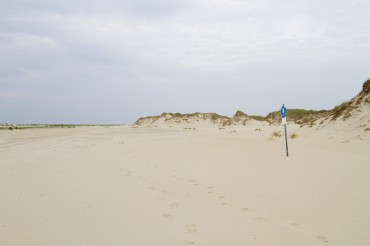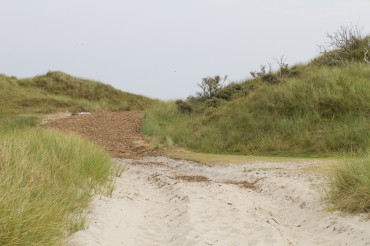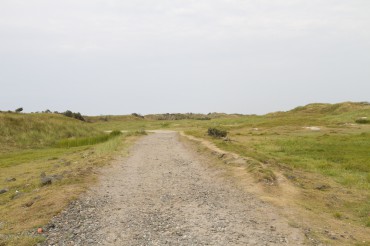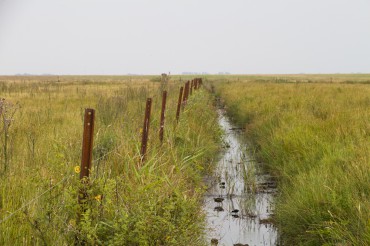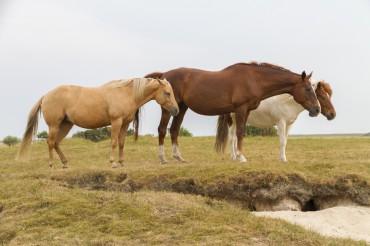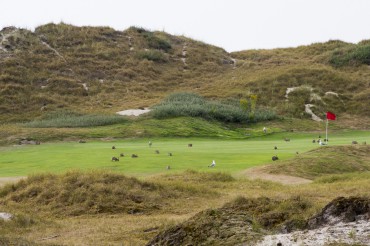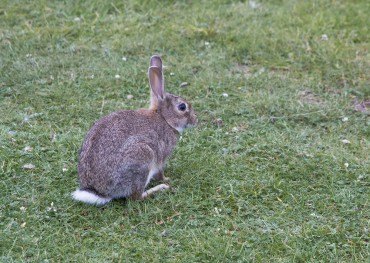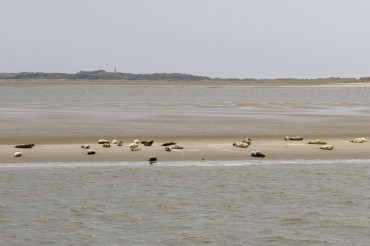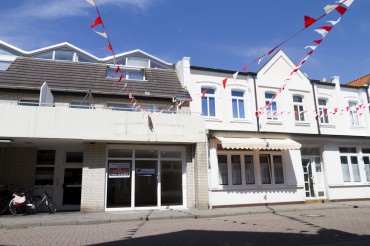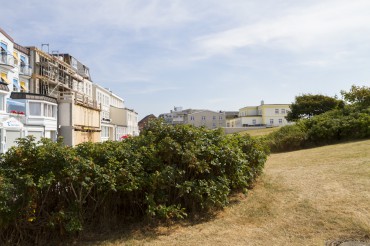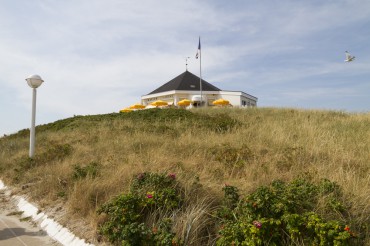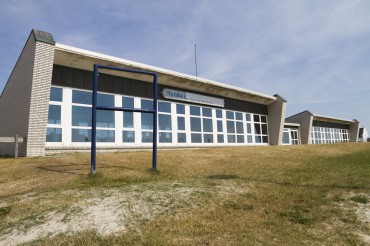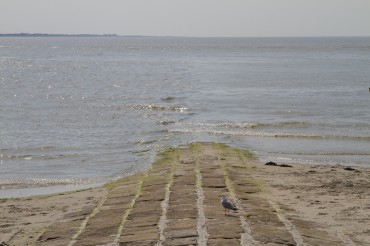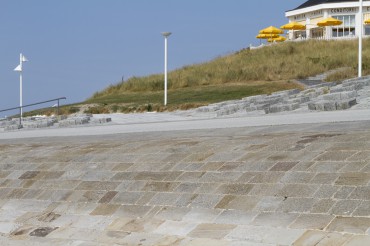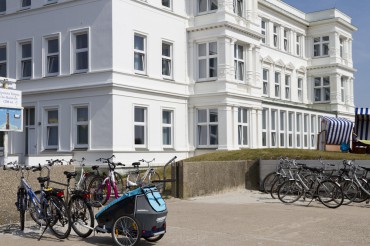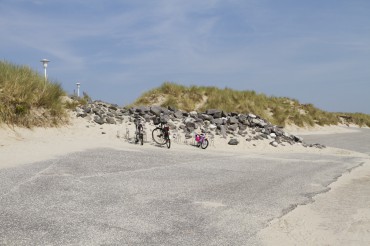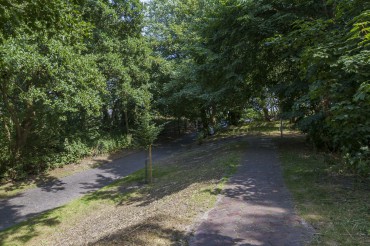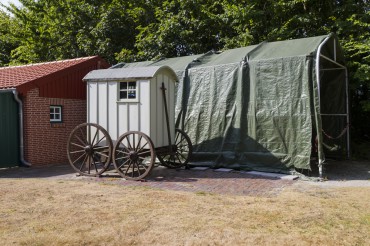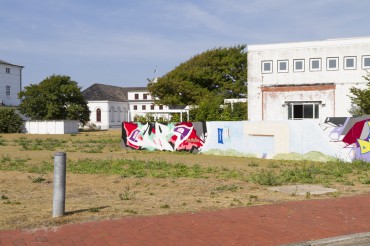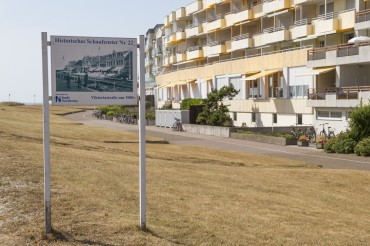We were in England for a short period in August, during which time it rained nearly every day. The temperature was lower than normal for the time of year, although I was assured by Alessandra that they had just had a heat wave. I didn’t believe this, of course – perhaps relatively speaking, it might have felt like a heatwave.
On the Saturday, the forecast was dry, and so we took a trip to Mersea Island in Essex. Alessandra’s car was being repaired, but she had managed to get a replacement for the weekend. I asked our mutual friend Katie if she would like to join us, as she is a lover of shellfish. She was keen to sample the rock oysters grown there and so agreed to come. But she informed us that there would be no native varieties available, as there was not yet an R in the month. On the journey, she told us about her recent holiday in Snettisham.
Mersea Island is attached to the mainland by the Strood. The Strood was built in the late sixth century at the time Saint Sæbbi was on the Essex throne. Oak piles had been used to hold up the causeway across the channel and surrounding marshes. Today it remains the only means of access to the island. I had checked the tide tables, as I’d read that the road is flooded when the sea comes in. We arrived about four in the afternoon, an hour before high tide; however, it looked unlikely that the water would rise enough to cut us off.
We parked up on the island side, and I went off to look at the structure. It appeared to be an ordinary asphalt road, shored up either side by large stones – alongside these were some weathered wooden piles standing in the water. When I returned to the car, Katie and Tom were tasting samphire they’d picked from the roadside.
Following the signs to the Cudmore Grove County Park, we found our way to East Mersea. From the car park, we could walk across the lawns, past the picnickers and toward the beach. We had a look at a second-world-war pillbox on the way to the cliff edge. We could go inside and climb up to above the mount, where I assumed a gun would have once been aimed at German aircraft flying in from across the North Sea. From the top, we could see plainly over the Colne Estuary to Point Clear Bay and the windfarm between there and Clacton.
The shingle beach was happily not as popular as the grassy areas, and once down there, we were mostly undisturbed. I estimated that by now, the tide must be at it highest, but the beach, although narrow, was still wide enough to walk along.
In the sea we saw another two pillboxes. These had long since fallen down the cliff and were now piles of broken slabs and bricks. Katie and Alessandra lay on one of them and took in the short burst of sunshine, while Tom searched for fossils in the cliff face.
I thought about how the North Sea was exactly the same colour on this side as at the German coast: a familiar brown-green, made turbid by sediment and mud – it was the colour of sea I remembered from the early years of my childhood when we lived in Herne Bay.
But although the water was the same in England and it is in Germany, the seafront was markedly different. The defences here were virtually non-existent, there were no sea walls or groynes or dykes; the only concrete was from the remnants of constructions that had once stood on dry land and now lie in pieces on the beach. When I got back later, I read the government-issued Essex and South Suffolk Shoreline Management Plan: I concluded from this that England had for the most part given up; it no longer made any attempt to hold back the tide, just to prevent the worst when the country finally disappears under water.
We didn’t go too far along the beach as it was getting darker and we were all a bit hungry. After speaking to a retired science teacher about the stones Tom had collected, we got back in the car and drove to West Mersea. Sitting outside by the harbour, we shared a mixed platter of seafood and drank Turkish beer. We talked about the depressing state of politics in the United Kingdom and the growing hostility toward foreigners. I reflected on how estranged I felt from the country of my birth.
A few days later, Tom and I took the plane from Gatwick to Cyprus, where we would spend the next two-and-a-half months.
